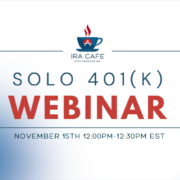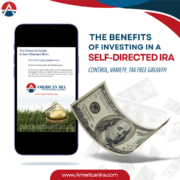No-More 60-day Daisy-Chain IRA Loans: Tax Court, IRS Tightening Rollover Rules
 Yes, IRS Publication 590, dealing with individual retirement arrangements, says specifically that you can withdraw money from an IRA or qualified retirement plan tax-free and penalty free, as long as you roll the money into an IRA within 60 days.
Yes, IRS Publication 590, dealing with individual retirement arrangements, says specifically that you can withdraw money from an IRA or qualified retirement plan tax-free and penalty free, as long as you roll the money into an IRA within 60 days.
But who are you gonna believe? A judge? Or your lyin’ eyes!?!?!
In a recent ruling against a taxpayer who was relying on the IRS’s own plain language in their own publication that he can take a withdrawal from a given retirement account tax-free as long as he rolls it over within 60 days.
Specifically, the dispute is over IRC section 408(d)(3), that allows IRA owners to withdraw funds from an IRA without having the money taxed or subjected to the 10% early withdrawal penalty so long as they redeposit the cash, or roll it over to a different IRA, within 60 days after the date of withdrawal.
The IRS has always informed taxpayers that the one-year waiting period applies separately to each IRA involved.
Here’s the IRS’s own language out of Publication 590:
Waiting period between rollovers. Generally, if you make a tax-free rollover of any part of a distribution from a Traditional IRA, you cannot, within a 1-year period, make a tax-free rollover of any later distribution from that same IRA [emphasis added]. You also cannot make a tax-free rollover of any amount distributed, within the same 1-year period, from the IRA into which you made the tax-free rollover.
The 1-year period begins on the date you receive the IRA distribution, not on the date you roll it over into an IRA.
So, according to the IRS, if you have three IRAs, and you pull the maneuver with the first one, and deposit the money in the 2nd one within 60 days, you can still take a freebie withdrawal from the third IRA account, as long as you redeposit it or establish a new IRA and deposit the funds within 60 days.
Otherwise, you get hit with a taxable distribution, plus any applicable penalties.
However, in this case, against Alan L. Bobrow, who is himself a tax lawyer and the former General Tax Counsel for CBS, the government threw out Publication 590, and actively based an argument on two cases from the 1990s that directly contradict their own published manual. The IRS is argued in the Bobrow case that rollovers are limited to only once per year per taxpayer, not per IRA.
This ruling essentially puts the kibosh on an old strategy, however, that allowed people with multiple accounts to ‘daisy chain’ a loan, rolling it from IRA to IRA, which allowed them to extend a 60-day loan for a much longer period of time.
The details get pretty technical, but here are our takeaways.
- Don’t mess about with anything other than a trustee-to-trustee transfer, if you can help it. The minute you take personal possession of funds in your IRA, you dramatically increase the chances of something going wrong.
- Don’t do more than one rollover transfer per year. It is true that the IRS, in attempting to reconcile many years of publication history with its absurd argument in this particular case, is throwing out its years of publication history in order to win this single case. They are revising their rules to disallow multiple IRA rollovers in the same year effective January 1, 2015. But as we can see from this case, the IRS speaks with a forked tongue in these matters.
- The IRS and the courts frown on those 60-day cash-in-hand rollovers, if there is any indication whatsoever that you’re using the money as a back-door loan.
- The IRS is known to cut people some slack on the 60-day rule – if they can demonstrate extenuating circumstances. However, the bar gets higher if you’re using the rule to get a cheap 60-day loan, or if they think you’re a tax professional or other sophisticated individual who should know better. If you’ve blown the 60-day threshold (this genius tax lawyer blew his because he forgot that August and July both have 31 days in them!), contact a tax professional immediately. Often a well-crafted letter can get the IRS to waive the rule.
For more information, see IRS Announcement 2014-15.
For the full Tax Court decision, see Bobrow v. Commissioner.
As one industry wag said, “leave it to a tax lawyer to botch the process, tick off the IRS, and ruin the strategy for the rest of us.”
Indeed. And that’s why we can’t have nice things.
Image by: presentermedia.com




